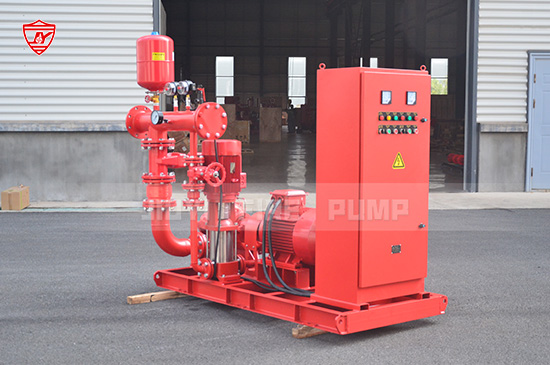As a vital component of any fire protection system, a fire pump must be in optimal condition to function effectively during an emergency. Fire pump failures can have serious consequences, and ensuring it operates at peak performance requires ongoing maintenance, timely inspections, and awareness of potential problems. Here’s how to prevent fire pump failures and ensure your system is always ready when needed.
 1. Regular Inspection and Testing
1. Regular Inspection and Testing
A common cause of fire pump failure is a lack of proper maintenance. Fire pumps should be inspected regularly to ensure that all components are functioning as intended. In accordance with NFPA 25, the National Fire Protection Association’s standard for inspection, testing, and maintenance of water-based fire protection systems, fire pumps should be tested weekly, monthly, and annually. These tests verify critical factors such as pressure, flow, and function.
2. Keep the pump and motor clean
Dirt, debris, and corrosion can damage pump parts over time. Be sure to keep the pump and motor clean and free of contaminants. Regularly check the pump’s suction strainer and filter, especially in environments with high levels of dust or debris.
3. Proper lubrication of moving parts
The moving parts of a fire pump, such as bearings and seals, require proper lubrication to reduce wear. Failure to lubricate these parts can result in excessive friction, which can lead to pump failure. Always follow the manufacturer’s instructions for lubrication intervals and oil types.
4. Monitor the pump’s electrical and mechanical systems
For electrically powered fire pumps, it is necessary to monitor electrical components such as the motor and connections. Loose or damaged wiring can cause failure to operate. Diesel engines should be checked for fuel quality, oil levels, and air filters. Engine failure can prevent the pump from activating when needed.
5. Test the pump’s pressure relief valve
The pressure relief valve is critical to preventing excessive pressure in the fire pump system. Regular testing of this valve ensures that it is functioning properly and prevents potential damage to the pump or piping. If the valve is damaged or blocked, the system can be damaged.
6. Perform regular system calibration
Fire pumps should be calibrated periodically to ensure that they are providing the correct pressure and flow. Calibration should be performed according to the manufacturer’s instructions to ensure that the pump is operating within the required parameters. Improper adjustment can result in inefficient operation or failure of the pump during an emergency.
7. Replace worn or damaged parts immediately
Fire pump components wear out over time, especially under heavy use. It is critical to replace worn or damaged parts before they cause the system to fail. Watch for signs of wear on seals, bearings, and valves. Keep spare parts on hand to reduce downtime and ensure quick repairs.
8. Maintain an adequate water supply
A fire pump can only be as reliable as its water source. Make sure your water supply system is free of clogs or contamination. Check the pump’s suction inlet and make sure it is free of debris, sediment, or other obstructions that can affect its performance.
Conclusion
Preventing fire pump failures requires proactive maintenance, timely inspections, and understanding the potential causes of failure. By implementing these best practices, you can help ensure that your fire pump is operating efficiently when you need it, protecting your property and your life in the event of an emergency.
